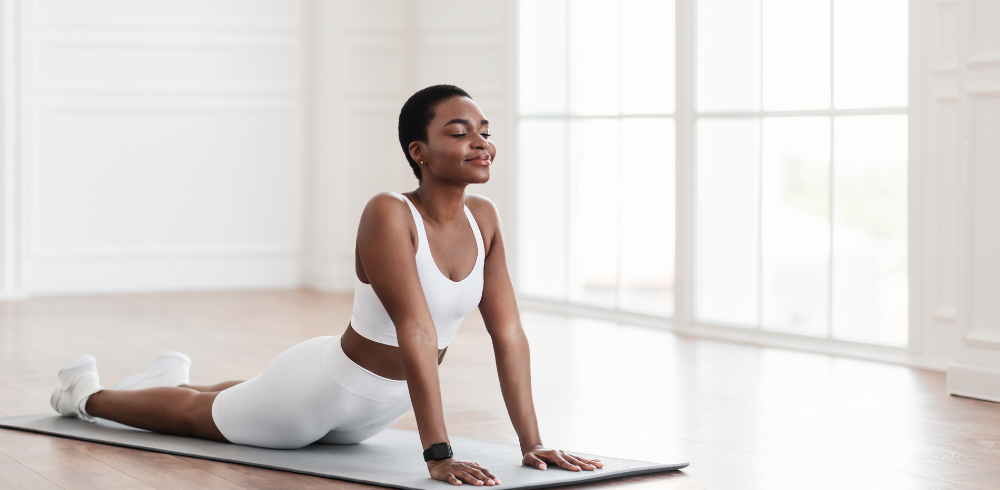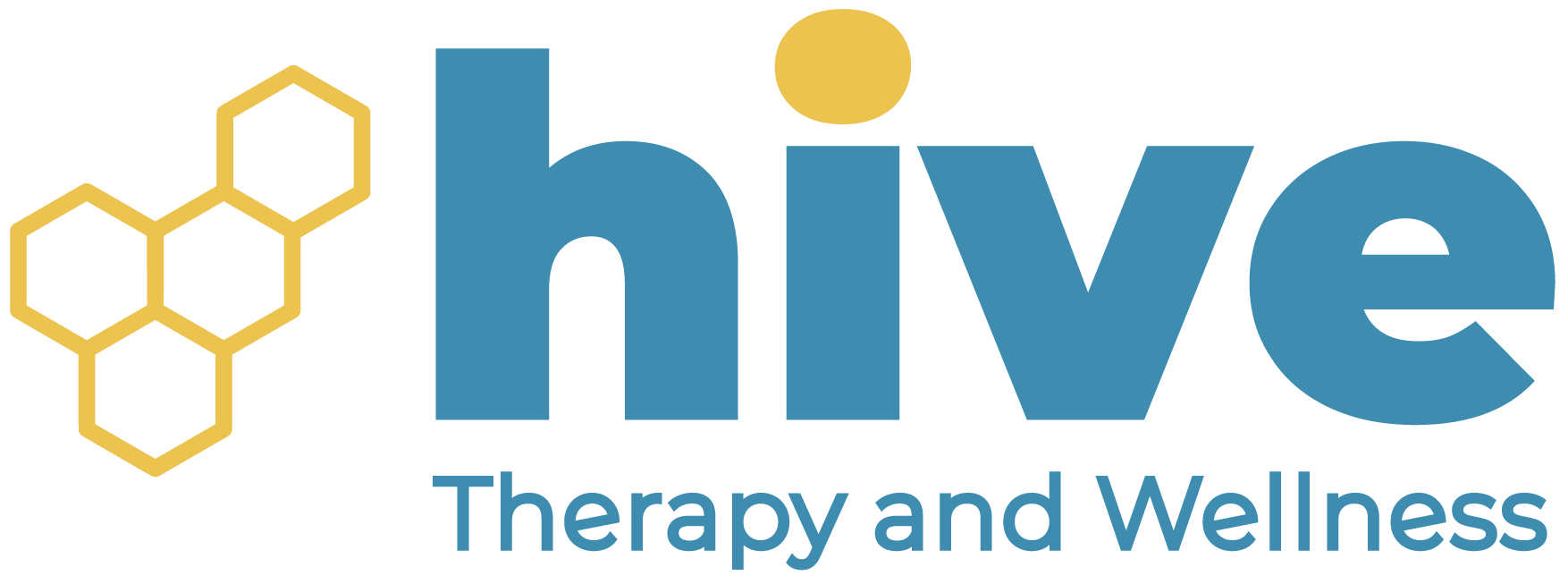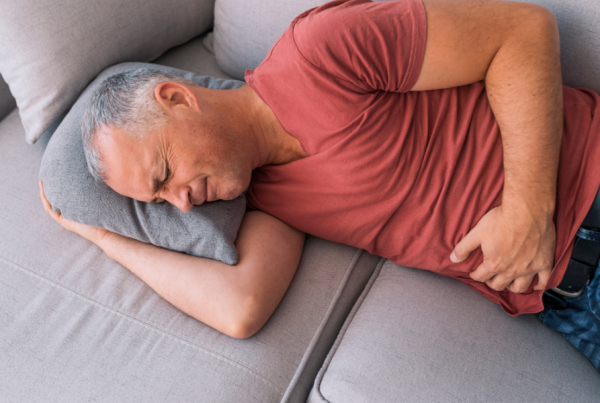Upper Back Pain
Move Better. Live Fuller. Your Wellness Journey Starts Here.
Schedule a FREE Discovery Call!
About Upper Back Pain
Upper back pain can be described as pain, stiffness, or discomfort in the thoracic spine, which refers to the upper and middle back. This area extends from the base of your neck to the bottom of your ribs. Upper back pain is not as common as lower back pain, as the upper back is much less mobile.
The upper back may not provide as much movement as the lower back, but it does allow for rotation (being able to twist your body) and serves as an important connection point for most of your ribs. This area protects important organs such as your heart and lungs, and supports the movements involved in breathing.

Additionally, the upper back contributes to stability of the body and your ability to stand upright. Having good posture and healthy upper back muscles is necessary to support balance, movement, and function. Unfortunately, problems with the upper back can occur due to a variety of issues, such as muscle imbalances, poor posture, injury, and more—which lead to pain and other symptoms.
Pain in the upper back can feel sharp, throbbing, achy, or like a burning sensation. Other symptoms of stiffness, tingling, numbness, or weakness may occur depending on the cause of your pain. For example, tension and stiffness can be a result of muscle imbalances, whereas weakness or numbness can be related to nerve compression. We’ll talk more about causes of upper back pain next!
What Causes Upper Back Pain?
Upper back pain is usually linked to poor posture, core weakness, impaired breathing patterns, muscle imbalances, injury, or other dysfunctions. We’ve outlined some common causes of upper back pain below:
Core Dysfunction
Some forms of upper back pain can be attributed to core weakness. Your core is a group of muscles that support your body’s weight, stability, balance, and movements. This includes your abdominals (six pack), deep abdominal muscles, obliques (muscles on the sides of your torso), multifidus (muscle on the sides of the spine), diaphragm, and pelvic floor muscles (a group of muscles located in the pelvis). Your core also works with nearby structures such as your hips, lower back, and shoulders to provide movement and function.
These muscles are essential to supporting the upper body and a variety of activities, such as walking, running, bending over, playing sports, and much more. Some of these core muscle groups are even a part of your upper back, so it is very important that the core is in good health in order to prevent upper back pain.
Having weakness or low coordination in the core muscles can destabilize your spine, leading to strain, poor posture, and pain. Poor core coordination can affect your breathing, as it impacts the diaphragm and its ability to coordinate with other muscles. Diaphragmatic dysfunction can cause tension in your upper back, and can contribute to pelvic floor dysfunction—which further impacts your core health.
As you can see, the upper back and core is very integrated with many areas of the body, which is why having good posture and balanced muscles throughout the body is very important for both upper back health and overall wellness. When core dysfunction or pelvic floor dysfunction is present, it can affect the upper back and create a variety of symptoms.
Pelvic Floor Dysfunction
The pelvic floor can play a surprisingly large role in your upper back health, despite the distance between the two areas. The pelvic floor is a group of muscles found within the pelvis that significantly affect the body’s core function, balance, stability, and movement.
These muscles, in coordination with other structures, help support your upper body’s weight and stabilize your spine. In other words, your pelvic floor works together with your core to support good posture and bodily movements.
Additionally, the pelvic floor works simultaneously with your diaphragm to support your breathing and intra-abdominal pressure. The relationship between the pelvic floor and diaphragm is very important, as they must be in good coordination to allow for core stability and breathing functions.
Other Muscle Imbalances
Muscle imbalances can affect the upper back more than you may think! Your upper body is made up of many different muscles, and tightness or weakness in these muscles can create a variety of problems for the back.
For example, problems with the pectoralis major and minor (chest muscles), upper trapezius (upper back muscles), or levator scapulae (lower neck muscles) can affect your shoulders and even pull your upper back out of alignment. In other cases, your pelvic or abdominal muscles may be tight, which impacts the posture of the lower back area and causes low mobility for the entire torso.
Due to the many different muscle groups located in the torso and their interconnectedness, it is very important to practice good posture and an active lifestyle!
Poor Posture
As stated quite often so far, posture is very important for upper back health! Poor posture habits, such as prolonged sitting, forward head posture, or a rounded back can increase strain on the thoracic spine and shoulders, creating upper back pain. Pelvic alignment matters too, as having a tilted pelvis can affect the curvature of your spine and cause pain in the upper back.
General daily posture is important, and so is your form during activities! Having poor posture while sitting at a desk, lifting objects, playing sports, or any activities involving bending or twisting can affect your upper back. Rest assured your physical therapist will incorporate these aspects into your treatment!
Injury, Strain, and Other Dysfunctions
Certain injuries or dysfunctions can also create significant pain to the upper back. This can include overuse injuries, impact from accidents or trauma, rib dysfunction, spine injuries, and more. We’ve listed some examples below:
- Repetitive strain: Many activities can create strain in the upper back. For example, activities or sports that have repetitive movements can create muscle strain, such as frequently bending over or reaching overhead. Consistently slouching, such as while using a cell phone or while working at a desk, can cause straining to the neck and upper back as well.
- Injury or trauma: Experiencing direct impact to the back such as from falls, whiplash, or other accidents may damage or strain the structures of the upper back.
- Arthritis or osteoarthritis: Degenerative joint diseases can create friction and pain in the spine that contributes to upper back pain.
- Rib joint dysfunction: Dysfunction can occur in the costovertebral joints, which connect your ribs to your back. Rib dysfunction can cause upper back pain, often near the shoulder blades.
- Scapular dyskinesis: This condition describes abnormal positioning or movement of a shoulder blade. Repetitive usage of the shoulders can create this condition and cause shoulder pain or upper back pain.
- Herniated disc: A herniated disc refers to the protruding or slipping of the cushioned padding (spinal disc) between two vertebrae. This can cause pain, weakness, or numbness in the back—although herniated discs are more common in the lower back.
Physical Therapy for Upper Back Pain
Physical therapy plays a significant role in treatment of upper back pain. Your provider at Hive Therapy and Wellness will take a comprehensive approach to your treatment, starting with a thorough evaluation to determine the possible causes of your pain. They’ll look for postural weaknesses or movement limitations, and formulate a care plan based on your needs and condition. This care plan may include aspects such as the following:
Posture and Breathing Corrections
As you may have gathered from this article already, posture plays a very significant role in your health. Poor back posture can strain your muscles, irritate nerves, create rib problems, and disrupt your breathing. To prevent or address these symptoms, your physical therapist will examine both your postural habits and movement mechanics and make corrections where needed. “Postural habits” can include a lot of situations, such as:
- Sitting or standing posture
- Walking posture
- Posture with cell phone use
- Posture while lifting or other common movements
- Sports-specific posture
- Posture when working at a desk
- And more
Everyone engages in different daily activities, jobs, or sports, so your physical therapist will be thorough in addressing your individual postural needs and habits. Poor posture can lead to problems with breathing—among other causes like core weakness or pelvic floor dysfunction. Your physical therapist will be sure to address any weaknesses in your breathing patterns, and teach you strategies or techniques to optimize diaphragmatic breathing. To further support better posture and breathing patterns, your physical therapist will incorporate core strengthening into your treatment experience!
Core Strengthening
Having a strong, coordinated core is very important for upper back health. In order for your core muscles to properly support your body’s weight, balance, and movements, they must be strong enough to withstand pressure, and well-coordinated to allow for movements.
To improve your core function, your physical therapist will incorporate a variety of exercises and stretches that target each of the muscle groups related to the core. This can include your hips, lower back, and pelvic floor! These exercises will help you learn to activate and coordinate your core with other muscle groups more effectively.
Pelvic Floor Training
As mentioned before, the pelvic floor can indirectly impact your upper back health with its role in core function and posture. If you have any signs of pelvic floor dysfunction or pelvic misalignment, your physical therapist will be sure to address these issues. Pelvic floor training can involve targeted exercises, stretching, and other treatments that help you gain a better understanding of your pelvic floor and how it functions. These exercises and stretching techniques will also improve the strength and mobility of your pelvic floor muscles.
Stretching and Exercise
In addition to targeted exercises for your core or pelvic floor, you can expect to engage in general exercises to promote whole body health. Muscle imbalances can occur anywhere, so your physical therapist will be sure to address any weakened muscle groups. Not to mention, your upper back muscles and shoulder muscles can have imbalances that contribute to dysfunction, stiffness, or weakness, so these areas must be assessed when treating upper back pain.
A holistic exercise routine is the best way to reduce muscle imbalances and enhance posture. This exercise plan will include stretching and mobility exercises that will enhance the function and flexibility of your upper back and core. Most importantly, this exercise routine is curated to your individual needs and condition!
Manual Therapy and Pain Management
The providers at Hive can provide many forms of pain management while simultaneously targeting the root cause of your condition. Pain management can vary greatly depending on your needs! For some, modalities such as heat or cold therapy, electric stimulation, or TENS can provide pain relief.
Manual therapy can be used for most individuals with upper back pain. This treatment can not only relax tense, tight muscles that may be causing your pain, but also provide additional benefits of improved blood flow and tissue mobility. It involves techniques such as cupping, tissue scraping, or dry needling, which can improve muscle function and activation while simultaneously relieving pain. These techniques can mobilize muscles, nerves, tendons, and ligaments—encouraging better movement and reducing tension.
Spinal Manipulation or Joint Mobilization
For many individuals, spinal manipulation or joint mobilization can be a useful treatment option, especially if they have misalignment, pain, or stiffness. These treatments can reduce pain and improve mobility for the thoracic spine, ribs, and shoulders. Gentle manipulation of the spine or mobilization of the joints can be used to encourage a better range of motion, restore proper alignment, and support better function!
Education and More
Lastly, your physical therapist can provide a wealth of information on at-home care, pain management, and lifestyle changes that can support long-term upper back health. They’ll prescribe you long-term lifestyle habits such as strengthening exercises, pelvic floor exercises, stretches, mobility training, and breathing practice. They can even provide lifestyle suggestions such as strategies to maintain good posture or ways to optimize your workspace ergonomics!
There are many treatments that a physical therapist can use to address upper back pain. At Hive Therapy and Wellness, our providers curate specialized treatment plans for each and every patient. Therefore, your care plan may vary based on your needs, but could include any of the following treatment methods:
- Neuromuscular re-education
- Manual therapy
- Exercise prescription
- Dry needling
- Cupping
- Tissue scraping
- Behavioral modifications
- Therapeutic activities
- Electrical muscle stimulation
- Spinal manipulation
- Therapeutic modalities
- Biofeedback
Upper back pain can be described as pain, stiffness, or discomfort in the thoracic spine, which refers to the upper and middle back.
This area extends from the base of your neck to the bottom of your ribs. Upper back pain is not as common as lower back pain, as the upper back is much less mobile.
The upper back may not provide as much movement as the lower back, but it does allow for rotation (being able to twist your body) and serves as an important connection point for most of your ribs.
This area protects important organs such as your heart and lungs, and supports the movements involved in breathing.
Additionally, the upper back contributes to stability of the body and your ability to stand upright. Having good posture and healthy upper back muscles is necessary to support balance, movement, and function.
Unfortunately, problems with the upper back can occur due to a variety of issues, such as muscle imbalances, poor posture, injury, and more—which lead to pain and other symptoms.
Pain in the upper back can feel sharp, throbbing, achy, or like a burning sensation. Other symptoms of stiffness, tingling, numbness, or weakness may occur depending on the cause of your pain.
For example, tension and stiffness can be a result of muscle imbalances, whereas weakness or numbness can be related to nerve compression. We’ll talk more about causes of upper back pain next!
Upper back pain is usually linked to poor posture, core weakness, impaired breathing patterns, muscle imbalances, injury, or other dysfunctions. We’ve outlined some common causes of upper back pain below:
Core Dysfunction
Some forms of upper back pain can be attributed to core weakness. Your core is a group of muscles that support your body’s weight, stability, balance, and movements.
This includes your abdominals (six pack), deep abdominal muscles, obliques (muscles on the sides of your torso), multifidus (muscle on the sides of the spine), diaphragm, and pelvic floor muscles (a group of muscles located in the pelvis).
Your core also works with nearby structures such as your hips, lower back, and shoulders to provide movement and function.
These muscles are essential to supporting the upper body and a variety of activities, such as walking, running, bending over, playing sports, and much more. Some of these core muscle groups are even a part of your upper back, so it is very important that the core is in good health in order to prevent upper back pain.
Having weakness or low coordination in the core muscles can destabilize your spine, leading to strain, poor posture, and pain.
Poor core coordination can affect your breathing, as it impacts the diaphragm and its ability to coordinate with other muscles. Diaphragmatic dysfunction can cause tension in your upper back, and can contribute to pelvic floor dysfunction—which further impacts your core health.
As you can see, the upper back and core is very integrated with many areas of the body, which is why having good posture and balanced muscles throughout the body is very important for both upper back health and overall wellness.
When core dysfunction or pelvic floor dysfunction is present, it can affect the upper back and create a variety of symptoms.
Pelvic Floor Dysfunction
The pelvic floor can play a surprisingly large role in your upper back health, despite the distance between the two areas. The pelvic floor is a group of muscles found within the pelvis that significantly affect the body’s core function, balance, stability, and movement.
These muscles, in coordination with other structures, help support your upper body’s weight and stabilize your spine. In other words, your pelvic floor works together with your core to support good posture and bodily movements.
Additionally, the pelvic floor works simultaneously with your diaphragm to support your breathing and intra-abdominal pressure.
The relationship between the pelvic floor and diaphragm is very important, as they must be in good coordination to allow for core stability and breathing functions.
Other Muscle Imbalances
Muscle imbalances can affect the upper back more than you may think! Your upper body is made up of many different muscles, and tightness or weakness in these muscles can create a variety of problems for the back.
For example, problems with the pectoralis major and minor (chest muscles), upper trapezius (upper back muscles), or levator scapulae (lower neck muscles) can affect your shoulders and even pull your upper back out of alignment.
In other cases, your pelvic or abdominal muscles may be tight, which impacts the posture of the lower back area and causes low mobility for the entire torso.
Due to the many different muscle groups located in the torso and their interconnectedness, it is very important to practice good posture and an active lifestyle!
Poor Posture
As stated quite often so far, posture is very important for upper back health! Poor posture habits, such as prolonged sitting, forward head posture, or a rounded back can increase strain on the thoracic spine and shoulders, creating upper back pain.
Pelvic alignment matters too, as having a tilted pelvis can affect the curvature of your spine and cause pain in the upper back.
General daily posture is important, and so is your form during activities! Having poor posture while sitting at a desk, lifting objects, playing sports, or any activities involving bending or twisting can affect your upper back. Rest assured your physical therapist will incorporate these aspects into your treatment!
Injury, Strain, and Other Dysfunctions
Certain injuries or dysfunctions can also create significant pain to the upper back. This can include overuse injuries, impact from accidents or trauma, rib dysfunction, spine injuries, and more. We’ve listed some examples below:
- Repetitive strain: Many activities can create strain in the upper back. For example, activities or sports that have repetitive movements can create muscle strain, such as frequently bending over or reaching overhead. Consistently slouching, such as while using a cell phone or while working at a desk, can cause straining to the neck and upper back as well.
- Injury or trauma: Experiencing direct impact to the back such as from falls, whiplash, or other accidents may damage or strain the structures of the upper back.
- Arthritis or osteoarthritis: Degenerative joint diseases can create friction and pain in the spine that contributes to upper back pain.
- Rib joint dysfunction: Dysfunction can occur in the costovertebral joints, which connect your ribs to your back. Rib dysfunction can cause upper back pain, often near the shoulder blades.
- Scapular dyskinesis: This condition describes abnormal positioning or movement of a shoulder blade. Repetitive usage of the shoulders can create this condition and cause shoulder pain or upper back pain.
- Herniated disc: A herniated disc refers to the protruding or slipping of the cushioned padding (spinal disc) between two vertebrae. This can cause pain, weakness, or numbness in the back—although herniated discs are more common in the lower back.
Physical therapy plays a significant role in treatment of upper back pain. Your provider at Hive Therapy and Wellness will take a comprehensive approach to your treatment, starting with a thorough evaluation to determine the possible causes of your pain.
They’ll look for postural weaknesses or movement limitations, and formulate a care plan based on your needs and condition. This care plan may include aspects such as the following:
Posture and Breathing Corrections
As you may have gathered from this article already, posture plays a very significant role in your health. Poor back posture can strain your muscles, irritate nerves, create rib problems, and disrupt your breathing.
To prevent or address these symptoms, your physical therapist will examine both your postural habits and movement mechanics and make corrections where needed. “Postural habits” can include a lot of situations, such as:
- Sitting or standing posture
- Walking posture
- Posture with cell phone use
- Posture while lifting or other common movements
- Sports-specific posture
- Posture when working at a desk
- And more
Everyone engages in different daily activities, jobs, or sports, so your physical therapist will be thorough in addressing your individual postural needs and habits.
Poor posture can lead to problems with breathing—among other causes like core weakness or pelvic floor dysfunction. Your physical therapist will be sure to address any weaknesses in your breathing patterns, and teach you strategies or techniques to optimize diaphragmatic breathing.
To further support better posture and breathing patterns, your physical therapist will incorporate core strengthening into your treatment experience!
Core Strengthening
Having a strong, coordinated core is very important for upper back health. In order for your core muscles to properly support your body’s weight, balance, and movements, they must be strong enough to withstand pressure and well-coordinated to allow for movements.
To improve your core function, your physical therapist will incorporate a variety of exercises and stretches that target each of the muscle groups related to the core. This can include your hips, lower back, and pelvic floor!
These exercises will help you activate and coordinate your core with other muscle groups more effectively.
Pelvic Floor Training
As mentioned before, the pelvic floor can indirectly impact your upper back health with its role in core function and posture. If you have any signs of pelvic floor dysfunction or pelvic misalignment, your physical therapist will be sure to address these issues.
Pelvic floor training can involve targeted exercises, stretching, and other treatments that help you gain a better understanding of your pelvic floor and how it functions. These exercises and stretching techniques will also improve the strength and mobility of your pelvic floor muscles.
Stretching and Exercise
In addition to targeted exercises for your core or pelvic floor, you can expect to engage in general exercises to promote whole body health. Muscle imbalances can occur anywhere, so your physical therapist will be sure to address any weakened muscle groups.
Not to mention, your upper back muscles and shoulder muscles can have imbalances that contribute to dysfunction, stiffness, or weakness, so these areas must be assessed when treating upper back pain.
A holistic exercise routine is the best way to reduce muscle imbalances and enhance posture. This exercise plan will include stretching and mobility exercises that will enhance the function and flexibility of your upper back and core. Most importantly, this exercise routine is curated to your individual needs and condition!
Manual Therapy and Pain Management
The providers at Hive can provide many forms of pain management while simultaneously targeting the root cause of your condition. Pain management can vary greatly depending on your needs!
For some, modalities such as heat or cold therapy, electric stimulation, or TENS can provide pain relief.
Manual therapy can be used for most individuals with upper back pain. This treatment can not only relax tense, tight muscles that may be causing your pain, but also provide additional benefits of improved blood flow and tissue mobility.
It involves techniques such as cupping, tissue scraping, or dry needling, which can improve muscle function and activation while simultaneously relieving pain.
These techniques can mobilize muscles, nerves, tendons, and ligaments—encouraging better movement and reducing tension.
Spinal Manipulation or Joint Mobilization
For many individuals, spinal manipulation or joint mobilization can be a useful treatment option, especially if they have misalignment, pain, or stiffness. These treatments can reduce pain and improve mobility for the thoracic spine, ribs, and shoulders.
Gentle manipulation of the spine or mobilization of the joints can be used to encourage a better range of motion, restore proper alignment, and support better function!
Education and More
Lastly, your physical therapist can provide a wealth of information on at-home care, pain management, and lifestyle changes that can support long-term upper back health.
They’ll prescribe you long-term lifestyle habits such as strengthening exercises, pelvic floor exercises, stretches, mobility training, and breathing practice. They can even provide lifestyle suggestions such as strategies to maintain good posture or ways to optimize your workspace ergonomics!
There are many treatments that a physical therapist can use to address upper back pain. At Hive Therapy and Wellness, our providers curate specialized treatment plans for each and every patient.
Therefore, your care plan may vary based on your needs, but could include any of the following treatment methods:
- Neuromuscular re-education
- Manual therapy
- Exercise prescription
- Dry needling
- Cupping
- Tissue scraping
- Behavioral modifications
- Therapeutic activities
- Electrical muscle stimulation
- Spinal manipulation
- Therapeutic modalities
- Biofeedback
You can learn more about these treatments on our Treatments Page.





